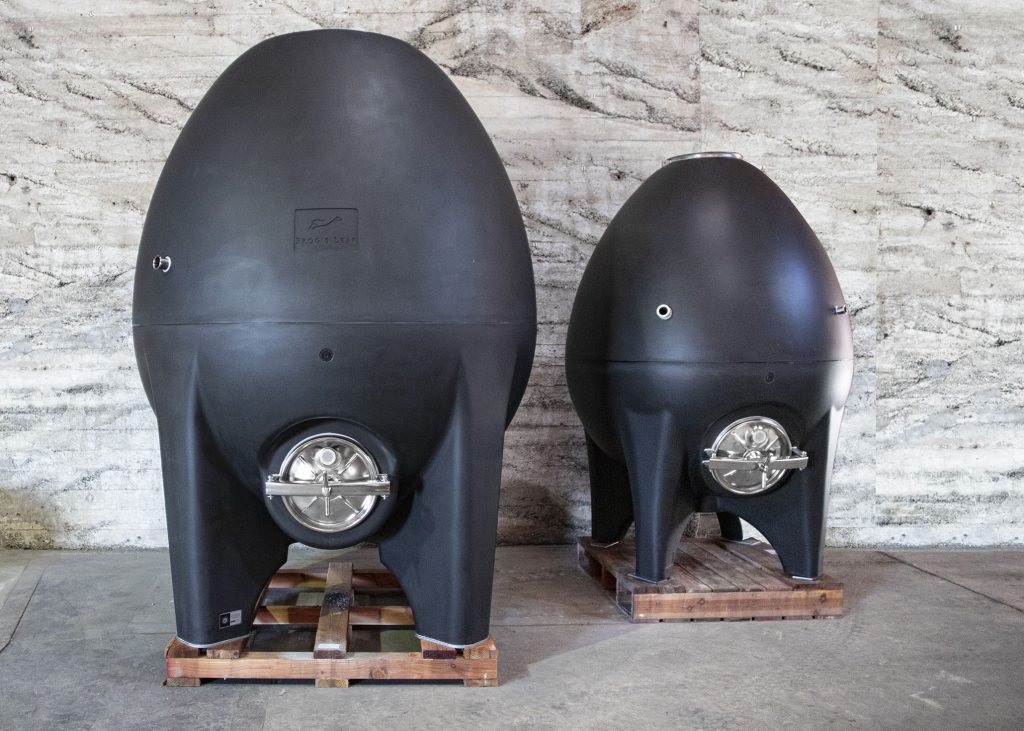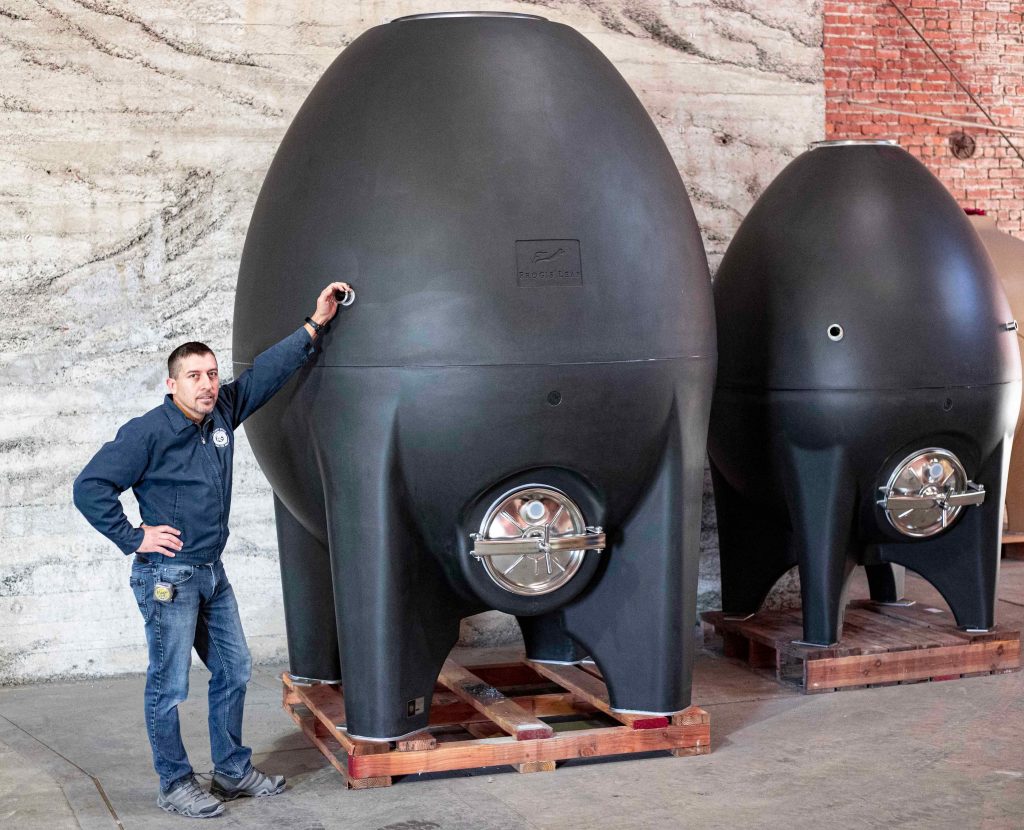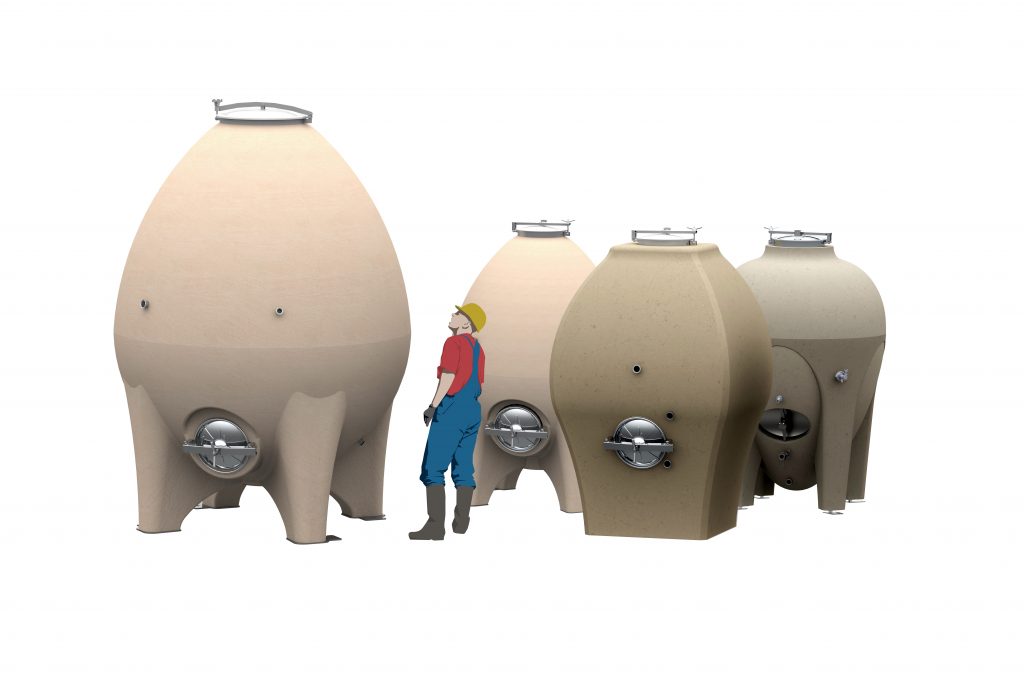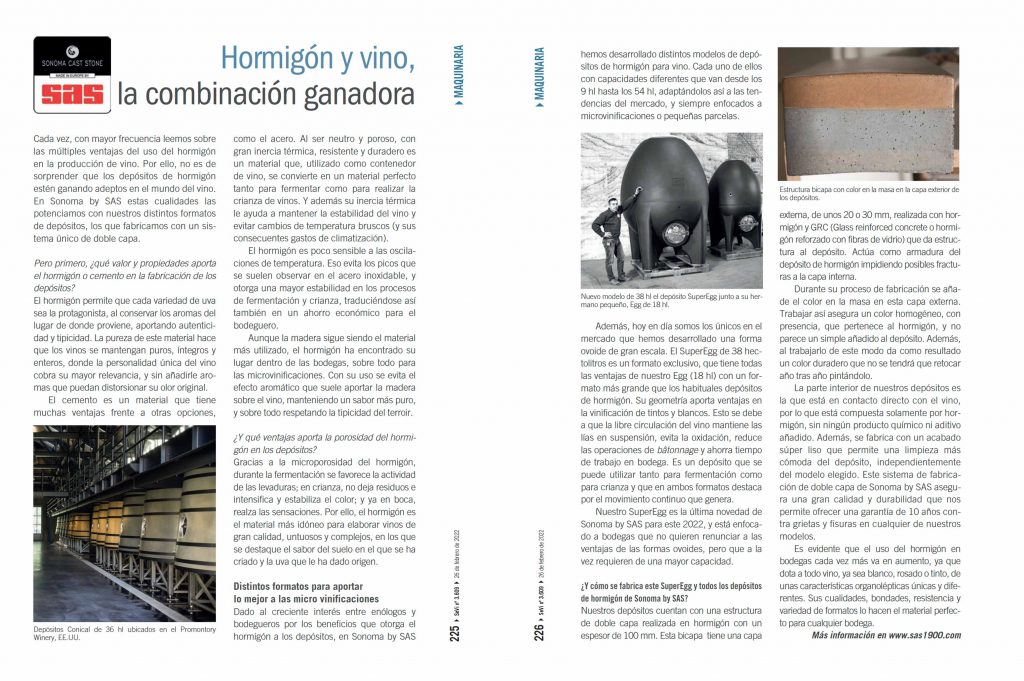Concrete and wine, the winning combination
These days we read more and more about the multiple advantages of concrete usage in wine production. So it isn’t surprising that concrete tanks are attracting followers in the world of wine. At Sonoma by SAS, we enhance these qualities with our variety of tank formats, which we manufacture using a unique double-layer system.

But first, what value and properties does concrete or cement provide in tank manufacturing?
Concrete lets each grape variety take centre stage, by preserving the aromas from its place of origin, thereby providing authenticity and typicality. The purity of this material helps the wines remain unadulterated, whole and complete, where their unique personality becomes especially important and with no additional aroma that may distort the original bouquet.
As a material, cement has many advantages when compared with other options,
such as steel. It is neutral and porous, with great thermal inertia, as well as being resistant and durable. It becomes a perfect material both for fermenting and ageing wines when used as a container. Its thermal inertia also helps maintain the wine’s stability and prevent sudden temperature changes (and consequent air conditioning expenses).
Concrete is not very sensitive to temperature fluctuations. This helps prevent the peaks that are usually observed with stainless steel, and provides greater stability in the fermentation and ageing processes, which also translates into economic savings for the winemaker.
Although wood is still the most commonly used material, concrete has also found its place in wine cellars, especially for micro-vinification. The aromatic effect that wood usually has on the wine is avoided, maintaining a purer flavour, and respecting the terroir’s typicality in particular.
And what advantages does concrete’s porosity provide the tanks?
The yeast’s fermentation activities are aided as a result of the concrete’s microporosity. During ageing, no residues are left and the colour is intensified and stabilised, while sensations in the mouth are enhanced. That’s why concrete is the most ideal material for making high-quality, unctuous and complex wines, in which the flavour and origin of the soil where the vine grew are more notable.
A variety of formats for the best in micro winemaking
Given the growing interest among oenologists and winemakers in the benefits that concrete offers for tanks, at Sonoma by SAS we have developed a variety of concrete wine tank models. Each one has a different capacity ranging from 9 hl to 54 hl, thereby adapting them to market trends, and always focusing on micro-farms or small plots..

Today we are also the only company on the market that has developed a large-scale ovoid shape. The 38 hectolitre SuperEgg is an exclusive format, with all the advantages of our Egg (18 hl), but in a larger size than the usual concrete tanks. The geometry gives it special advantages when it comes to making red and white wines.
This is because the free circulation of the wine keeps the lees in suspension, prevents oxidation, reduces bâtonnage operations and saves time on warehouse work. This tank may be used both for fermentation and ageing and is notable in both formats for the continuous movement it enables.
Our SuperEgg is the latest innovation from Sonoma by SAS for 2022, and is focused on wineries that do not wish to give up on the advantages of ovoid shapes, but that require larger capacities at the same time.

And how are the SuperEgg and other Sonoma by SAS concrete tanks manufactured?
Our tanks have a double-layer structure made of 100mm thick concrete. This bilayer has an external layer, about 20 or 30 mm thick, which is made of concrete and GRC (reinforced concrete with glass fibres) that gives structure to the tank. It acts as reinforcement for the concrete tank preventing possible fractures to the inner layer.
During the manufacturing process colour is added to the mass in this outer layer. This approach ensures an attractive even colour, characteristic of concrete, which doesn’t appear to be a simple addition to the tank. Working in this manner also results in a longer-lasting colour that doesn’t have to be repainted year after year.
The inner part of our tanks is in direct contact with the wine, so it is made exclusively of concrete, with no added chemicals or additives. It is also manufactured with a super smooth finish which makes cleaning the tank easier, regardless of the particular model. This double-layer manufacturing system from Sonoma by SAS, ensures high quality and durability, which means we can offer a 10-year warranty against cracks and fissures in any of our models.
Concrete usage in wineries is evidently on the rise, since it endows all wine, whether white, rosé or red, with unique and different organoleptic characteristics. Its range of qualities, benefits, strength and variety of formats make it the perfect material for any winery.


